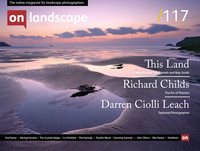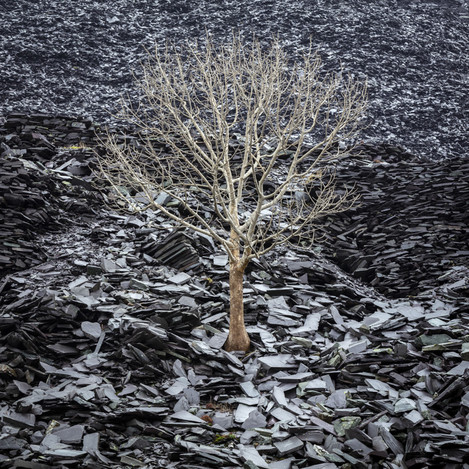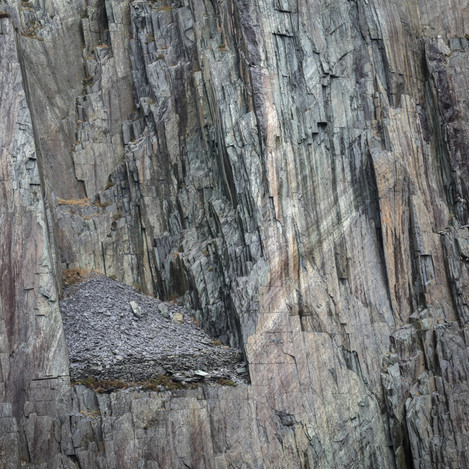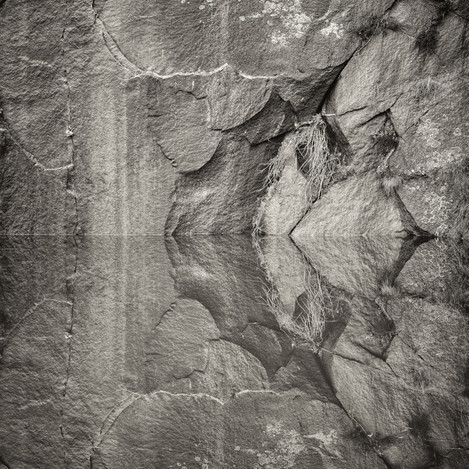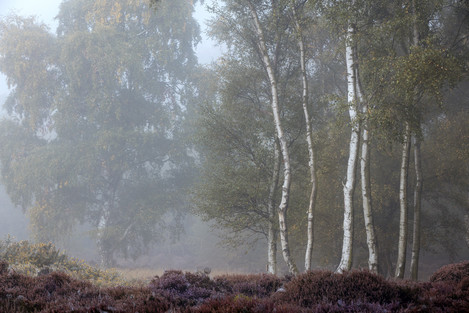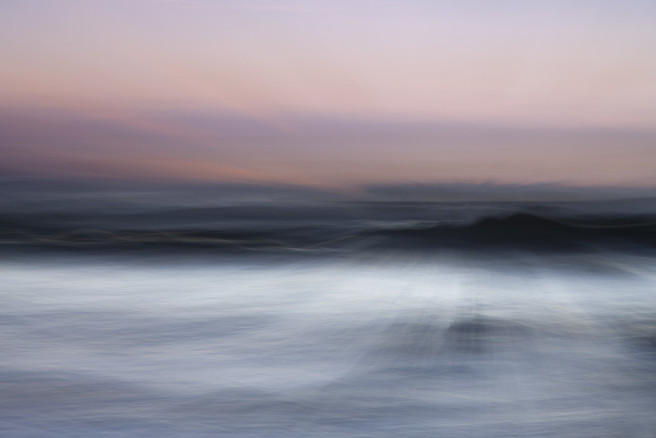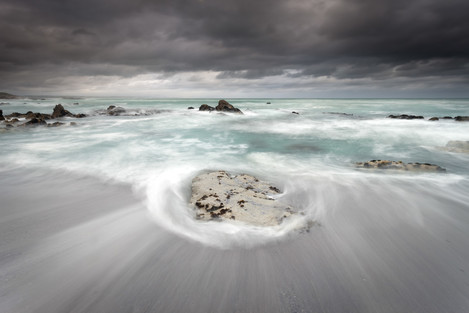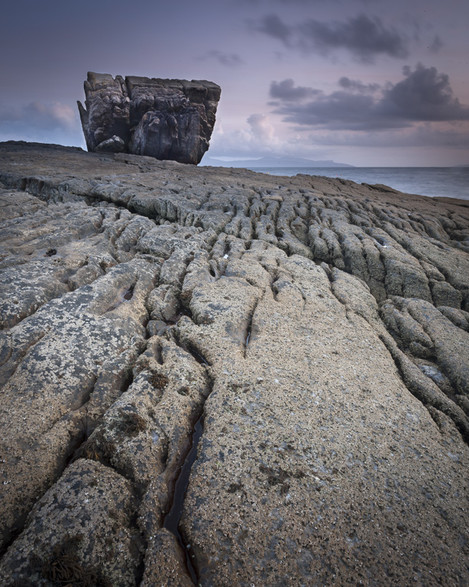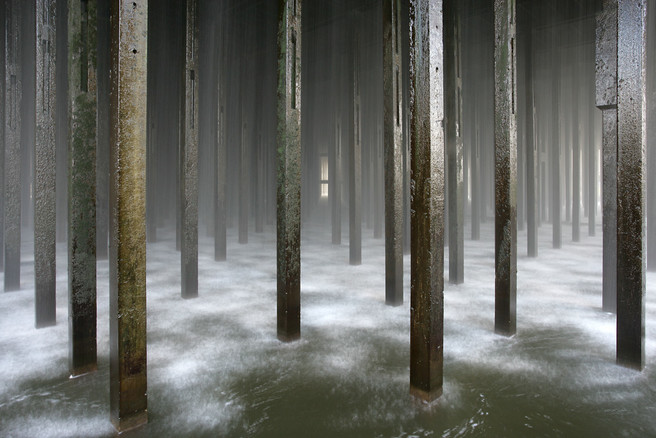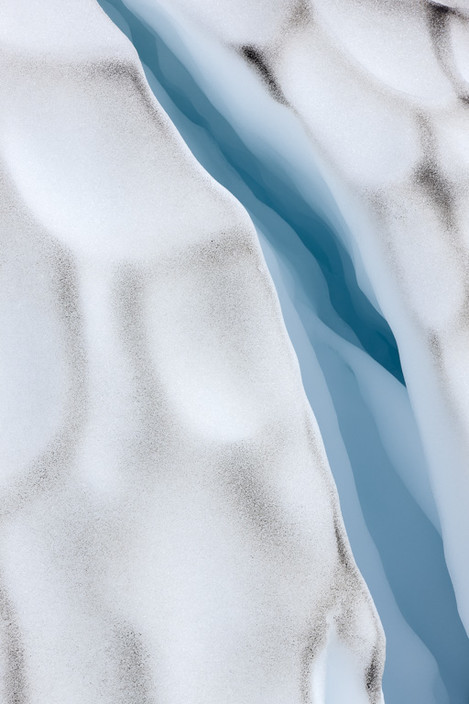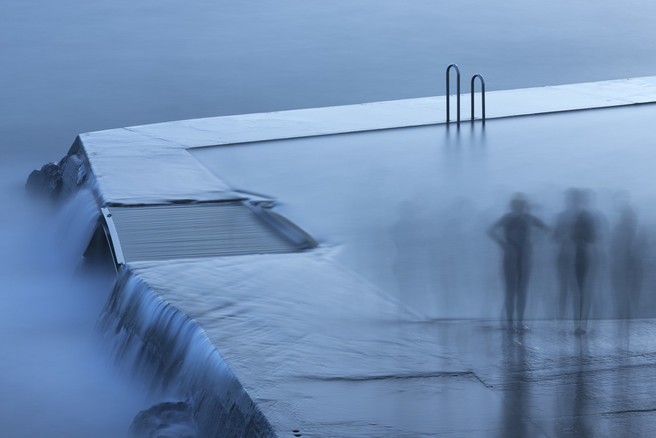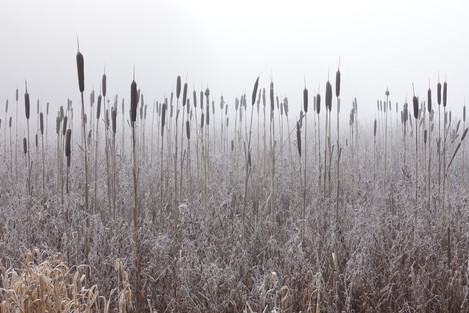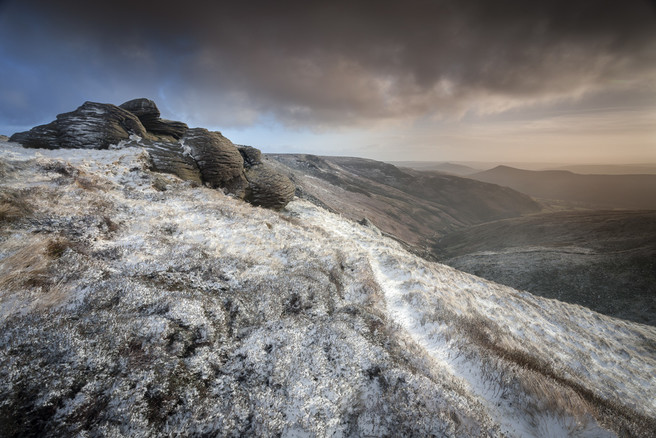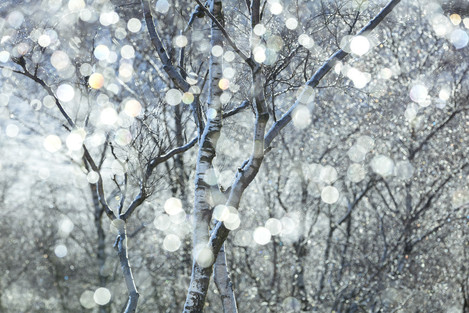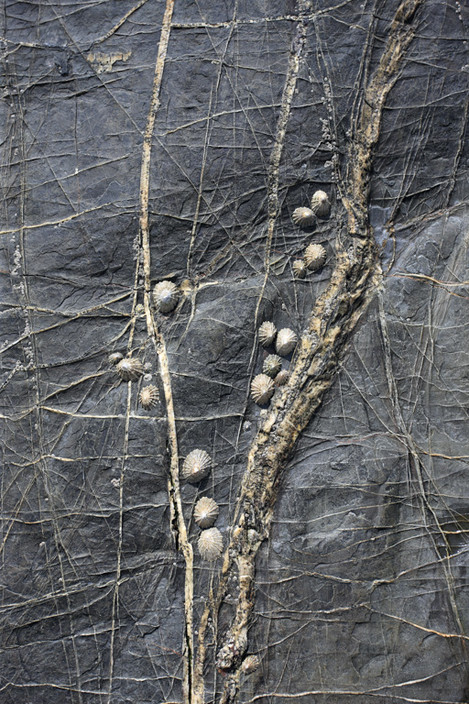Featured Photographer

Darren Ciolli Leach
Darren Ciolli-Leach is a Graphic Designer and Photographer from Nottinghamshire where he lives with his wife and two children. His love for the outdoors has been the driving force behind his burning passion for landscape photography and he can be regularly found wandering around the Peak District with camera in hand or grimacing whilst climbing the hills on his mountain bike.

Michéla Griffith
In 2012 I paused by my local river and everything changed. I’ve moved away from what many expect photographs to be: my images deconstruct the literal and reimagine the subjective, reflecting the curiosity that water has inspired in my practice. Water has been my conduit: it has sharpened my vision, given me permission to experiment and continues to introduce me to new ways of seeing.
Like many, Darren Ciolli Leach has had a passion for the outdoors from an early age and through his landscape photography can combine this with his interest in design. He says on his website that as a visual person he finds it difficult to express in words what taking photographs means to him, but he kindly agreed to give it a go for On Landscape.
Can you tell me a little about your background – your education, early interests and career?
I was born and raised in Southwell, Nottinghamshire (home to the wonderful Masters of Vision Exhibition and talented Photographers Pete Bridgwood and Chris Upton). It’s a beautiful rural and historical town but sadly only something I’ve grown to appreciate in later life. Growing up there as a teenager interested in Punk music it seemed like the most boring place on earth but it certainly (with hindsight) sparked my love of the countryside and my longing to be out in the landscape.
When it comes to education then a phrase that appeared on almost all of my school reports probably sums it up: ‘could do better’. I was always a very creative person from an early age and had a talent for drawing which eventually lead me to enrol in Art College. I found college very restrictive, and as a teenage punk decided that I wasn’t going to be told what was and what wasn’t art, so I left the course early.
Career wise, I became a Graphic Designer and a Creative Director of a design agency, and I started my own design and photography business 15 years ago. I now also combine all of my passions by being involved with the design and production of photographic books from time to time.
What first prompted you to pick up a camera?
Music has always been a huge part of my life and punk has influenced my thought processes and creativity ever since. I bought my first camera at age 16 (a Pentax P30) to start to document the live punk shows that I regularly attended, and I believe this is where my passion for making images was born. At the age of 18, I travelled to San Francisco to document the Punk scene there and continued to photograph shows for the next couple of years. Sadly due to the onset of stage diving I stopped photographing shows as I sustained too much damage to my equipment and couldn’t afford to replace it. I sold all of my equipment and didn’t own a camera for the next three years.
My life changed dramatically one day on a wander around my local Waterstones when I came across a book that had just been released entitled ‘First Light’ by a guy called Joe Cornish, who I’d never heard of but I decided to have a flick through it anyway.
A couple of weeks later I bought a Mamiya 6 medium format rangefinder kit (which I still have) and my love of photography was rekindled, and it’s a fire that has never diminished.
Has it always been landscape photography for you? Have other genres appealed?
I’ve always felt a real connection to the landscape, but never really started to record it with a camera until I saw Joe Cornish’s work. Joe not only showed me what was possible with a camera but he also opened my eyes to the amazing landscape that we have here in the UK, and it’s inspired me to ‘get out there’ whenever I get the opportunity. Apart from my initial foray into live music photography I also spent five years photographing mountain bike races (I’ve been a very keen mountain biker since I was a teenager) which took me to some wonderful parts of the country.
You’ve written that you find it difficult to express in words what taking photographs means to you?
For me, photography is a very personal and somewhat spiritual thing. On a personal level, it has become my medicine, a drug of choice. I have suffered from crippling depression since my early teens and
Who (photographers, artists or individuals) or what has most inspired you, or driven you forward in your own development as a photographer?
As I’ve mentioned earlier, Joe Cornish was the one individual who inspired me to take a camera out into the landscape, but there was one individual in particular who made me take image making more seriously and opened my eyes to what was possible with a camera.
Bruce Percy. I first met Bruce probably 15 years ago on a trip to Rannoch Moor. I’d been out shooting all day and retired to the communal lounge at Kings House Hotel to review my shots when a quietly spoken Scottish gentleman came over to talk to me; his name was Bruce, and he seemed equally as passionate about making images as myself. We’ve been good friends ever since, and I’ve been involved with Bruce’s two book publications and am due to start work on his third book soon.
Julian Calverley. His work is on another level; I can’t say any more than that.
I take inspiration from lots of Photographers, and there are probably too many to mention across different genres, but my early music photography was definitely influenced by Murray Bowles and Glen E. Friedman.
What was the last image (by another) that stopped you in your tracks?
An image that really sticks in my mind and made me think “I wish I’d taken that” was ‘Lenny Medler's Scrapyard’ by Matthew Dartford. This image has everything I look for in an outstanding shot: composition, light, tone & colour. There’s nothing I can think of that can be improved on.
You’ve a great respect for nature – both as a teacher of design and as a disciplinarian?
Yes, for my nature is perfect. It can be cruel, and it can be unforgiving, but it has a natural order that answers to no one. I’m not a religious person, but if I had to choose a religion, it would be nature. It teaches us everything we need to know about ourselves and our planet, and unless we pay attention to it, I fear we will suffer the consequences.
Nature is the ultimate designer; everything it encompasses has a purpose. It’s easy to mythologise about the power of nature but on a spiritual level, I feel an indescribable connection to it which I’m sure a myriad of landscape photographers can relate to.
Looking at your website galleries, your definition of landscape is broader than the ‘natural’, and you seem equally interested in the interaction between man and land, not all of it conventionally scenic?
We all live in a landscape, be it rural or urban and I feel that either one has undeniable beauty. I can be sat alone in a woodland at 5 am and admire the architecture of the trees, and I can be walking under a concrete overpass in the city and also admire the beauty of its form and function. Beauty lies everywhere. The landscape would be able to evolve perfectly without the intervention of man, but I feel we as humans would never be able to evolve without the landscape.
Your gallery of images from Iceland is tucked away at the end, almost apologetically. It’s blissfully free of the clichéd locations and shouty light and, for me, better shows the scale and alien nature of the landscape. There’s room to breathe….
When Bruce Percy asked me if I wanted to accompany him on a trip to Iceland, my first thought was one of elation but quickly turned to one of apprehension. I was travelling to Iceland with an incredible Photographer, and it’s a landscape that’s been photographed widely - could I do it justice?
Internally I feel I was guilty of setting the bar high. I have extremely high expectations of myself and in doing so often set myself up for a fall. It was only when I was on the plane that I decided I was just going to go with the flow, to forget what everyone else has photographed and shoot what I saw before me, offer myself to the landscape and embrace it.
I think Iceland was a pivotal point in my photography, for one it was the first time I’d gone on a trip solely with the intention of making images and secondly it taught me to trust my instincts. Of course, it was difficult not to visit some of the landmark sites and not make images (I’d challenge any photographer not to), but they are the images I’m least proud of. For me the spirit of Iceland lies away from the tourist hot spots and clichés; it’s an incredibly inspiring and wildly beautiful place that I intend to explore again in the none too distant future.
Which cameras and lenses do you like to use and how do they affect your photography?
I’ve always shot with the Canon system, formerly the 1Ds MKII & 1Ds MKIII, but recently bought the 5Ds which I’m currently very happy with although it has developed a few annoying faults. I have lots of lenses due to me doing more commercial shoots but having a painful back problem at the moment (mountain bike crash!) means that I’ve pared down the landscape bag. My pack now consists of a Canon 5Ds, a Canon 24-70 MKII 2.8, Canon 70-200 MKII 2.8 & a set of Lee filters ND Grads and Polariser.
I’m not a gear freak, and I obviously like the best I can afford, but I certainly don’t get hung up on the fact that I don’t have the latest equipment. Gear is gear - just take a look at Paul Mitchell’s wonderful pinhole shots as proof. The image exists in the eye and mind of the person taking the image; the camera just freezes that vision in whichever medium you choose.
You prefer to be called an image maker rather than a photographer. What do you wish to convey by this distinction?
The term ‘Photographer’ doesn’t really sit well with me; it may be that I feel fraudulent describing myself as one, as I’ve never had any formal training whatsoever. I also feel it can pigeon hole you to a certain extent as people’s expectations of you are often misguided. The first question people tend to ask if you say you’re a photographer is “do you do weddings?” I enjoy making images of lots of things and probably all technically incorrect, but the bottom line is I enjoy making them.
Can you choose 2-3 favourite images from your own portfolio and tell us a little about them?
Concrete Rainforest
My first image is ‘Concrete Rainforest’ which is probably my most successful image to date as it won the Urban View category in Landscape Photographer of the Year Collection 4. I’ve often driven from Nottingham along the A453 to junction 24 of the M1 motorway passing the huge imposing cooling towers of Ratcliffe-On-Soar power station and each time I’ve wondered what it would be like to photograph them at close quarters.
I decided that no one was going to invite me to photograph them so the only way in was just to ask the question (I knew people had been given access before as Michael Kenna has made some wonderful images of them). I called and sent a few emails and to my delight they allowed me on site (with a dedicated safety guide) and after walking around for a few hours I was drawn to the concrete supports that were holding up the cooling towers, they were just beautiful in their simplicity and function with a steady stream of water falling from the ceiling. I waited for the light to hit where I wanted and took 3-4 shots using a slow shutter speed to add movement to the water below. It’s still one of my favourite shots as I think it’s timeless and unique. Sadly due to security issues I don’t think I’ll ever be allowed access again so it may never be replicated.
Ice Fissure
My second image is ‘Ice Fissure’ which I took in the Central Highlands of Iceland. I particularly like this image because of its simplicity, and I feel it blurs the line between photography and abstract art and shows nature in its purest form. We had been driving along one the remote roads in Iceland’s barren interior when I noticed a small gulley a few hundred metres away that appeared to be filled with large broken slabs of snow and ice. I thought they had photographic potential so went down to have a closer look and when I got closer saw that most were covered with black volcanic soil but were still forming some incredible abstract shapes. I ventured a little further and found a three-metre vertical fissure in the middle of one of the bergs which were filled with the most astonishing blue ice and light. It was one of those life-affirming moments when you are subjected to the most incredible display of nature’s sublime beauty, and an image I will never forget.
Ghosts of the Sea Pool
Image number three is ‘Ghosts of the Sea Pool’. This image was taken on a family holiday in Cornwall and I’d tried unsuccessfully to shoot this sea pool in Bude the year before but due to me messing up the tide times the sea wasn’t high enough. This time, my planning was a little more accurate, and when I arrived at the pool, the sea coverage was perfect. I initially took a few shots of the pool and its overflow which I was happy with but I’d noticed that there were a group of people in the side pool doing their Lifeguard training. I hung around in the hope that one of them would venture into the pool I was shooting and break the calmness of the water to add another dimension to the shot. Sadly this never happened, but they did all congregate around the pool and stayed static enough to allow a small amount of movement blur to the figures. Sometimes you just get lucky.
Tell me a little about how much emphasis you place on post-processing and whether you have found a workflow that suits you?
I don’t personally do that much to an image in post processing as I always prefer to get it as close to my vision as possible in camera. I often find that if the image wasn’t quite right in the viewfinder than no matter how much polishing and tweaking you do in Lightroom or Photoshop, you’ll never reach the desired outcome.
I think when you really know how to use post processing well you can definitely add to an image, but I hasten to add that generally those that know how to use it well such as Mark Littlejohn make it look almost invisible.
You brought some rather nice A2 prints along to the launch of the Connected2016 exhibition, so clearly printing is important? I think I read a reference to you having a background in printing?
For me, printing completes the creative circle. As an image maker, I conceive an image in my mind, I take the shot, I process it, and I print it. I then have something tactile and tangible to show for my efforts. It’s like an artist finally showing the portrait to their sitter.
When I worked as a Creative Director in a design agency we were lucky enough to have our own Lithographic printing press so for me (not wanting to sound like a control freak), it was all about management of the process, from design concept to finally holding the print in your hand and taking ownership. I also miss those memories of holding a perfectly exposed transparency up to the light.
What response or reaction from viewers do you hope for?
Any reaction would be more than welcome. Ultimately I take images for myself, and I can’t always expect a viewer to understand my frame of mind when I was taking the shot, but hopefully my images convey some emotion or aesthetic in them. I believe there are times when we try to look too deeply into an image and miss the beauty.
How easy, or hard, is it to find and maintain inspiration and confidence in what you are doing and where you are heading?
Extremely hard. Having suffered from depression for the majority of my life, I can hit incredible lows where it feels as though someone has just thrown a large black sheet over me (a poor analogy I know, but it’s as honest as I can be). The problem with depression is you never feel your work is good enough which can be very destructive, but on the other hand, it can also help push you to attain higher standards.
I think the feeling of stagnation is something that is experienced by everyone in a creative field at some point in their life and over the years I’ve learned to embrace it and also to some extent learned how to deal with it.
Having a young family and a wife that works full time makes it very difficult for me to get out at some ridiculous hour to shoot these days, so I find I’m producing fewer images. Having a purpose to shoot often helps so setting goals and projects is a positive step and something to aim for. I also have a huge list of places overseas that I’m desperate to visit and perhaps do a book on, but they’ll have to wait till my lottery win.
Do you have any particular plans, projects or ambitions for the future? ‘Blandscapes’ was mentioned earlier this year?
I have lots of potential irons in the fire and sadly more projects and plans than I can afford to achieve physically. I think my main goal is to travel more and generally to more wilderness locations such as Kamchatka, Greenland and Mongolia.
There are still plans afoot for a book which is based on the photographer’s connection to our woodlands. I’m hoping it will be a showcase of 10-12 photographers whose woodland work I admire, and the intention is for them to explain and explore their personal connections to trees and the British woodland.
I’m currently working on Bruce Percy’s third book (Bruce is talking at the Meeting of Minds Conference this November) and also a book for another well-known photographer who shall remain nameless for now.
‘Blandscapes’ is an ongoing project of mine with a subtitle of ‘An antidote to the extraordinary’ which explores various landscapes, rural and urban and their obvious lack of beauty, but places which I find mesmerising for that exact reason. We can’t all shoot Yosemite!
If you had to take a break from all things photographic for a week, what would you end up doing?
Riding my mountain bike and thinking about where I want to go with my camera next!
How optimistic are you about the current state of and future for landscape photography in the UK?
Very optimistic indeed. We have a huge amount of extremely talented landscape photographers out there. You only have to flick through any of the Landscape Photographer of the Year books to see the incredibly high standard of work. I see lots of wonderful work shared on social media and Flickr too. I think with this resurgence of work, landscape photography is slowly becoming a more established and recognised art form than it was ten years ago and that can only be a positive thing. I think this is undoubtedly fuelled by the hard work and support that people like Steve Watkins, Charlie Waite, Doug Chinnery and Pete Bridgwood to name but a few, have put into the wider landscape community.
Which photographer(s) – amateur or professional - would you like to see featured in a future issue?
There are lots of great Landscape Photographers out there, but my current tips for ‘Stardom’ are Dylan Nardini, Damian Ward, Michael Cummins, Dave Fieldhouse, Camillo Berenos, Andy Gray, Colin Bell (you may have featured some of these already).
Indeed we have – you can read an interview with Colin Bell, and Colin is one of our featured photographers to be exhibiting in the On Landscape Room at Joe Cornish Gallery, which launches on the 16th July.
Michael Cummins has his 4x4 and another article 'Journey of Photographic Discovery published and Camillo Berenos 4x4 feature.
Thank you for sharing your thoughts with us, Darren. You can share more moments at www.darrenciollileach.com. I think we should also take this opportunity to give a nod to Darren for the time he spent designing and producing the Auction Catalogue for the Photographers for the Cumbrian Flood Appeal.

